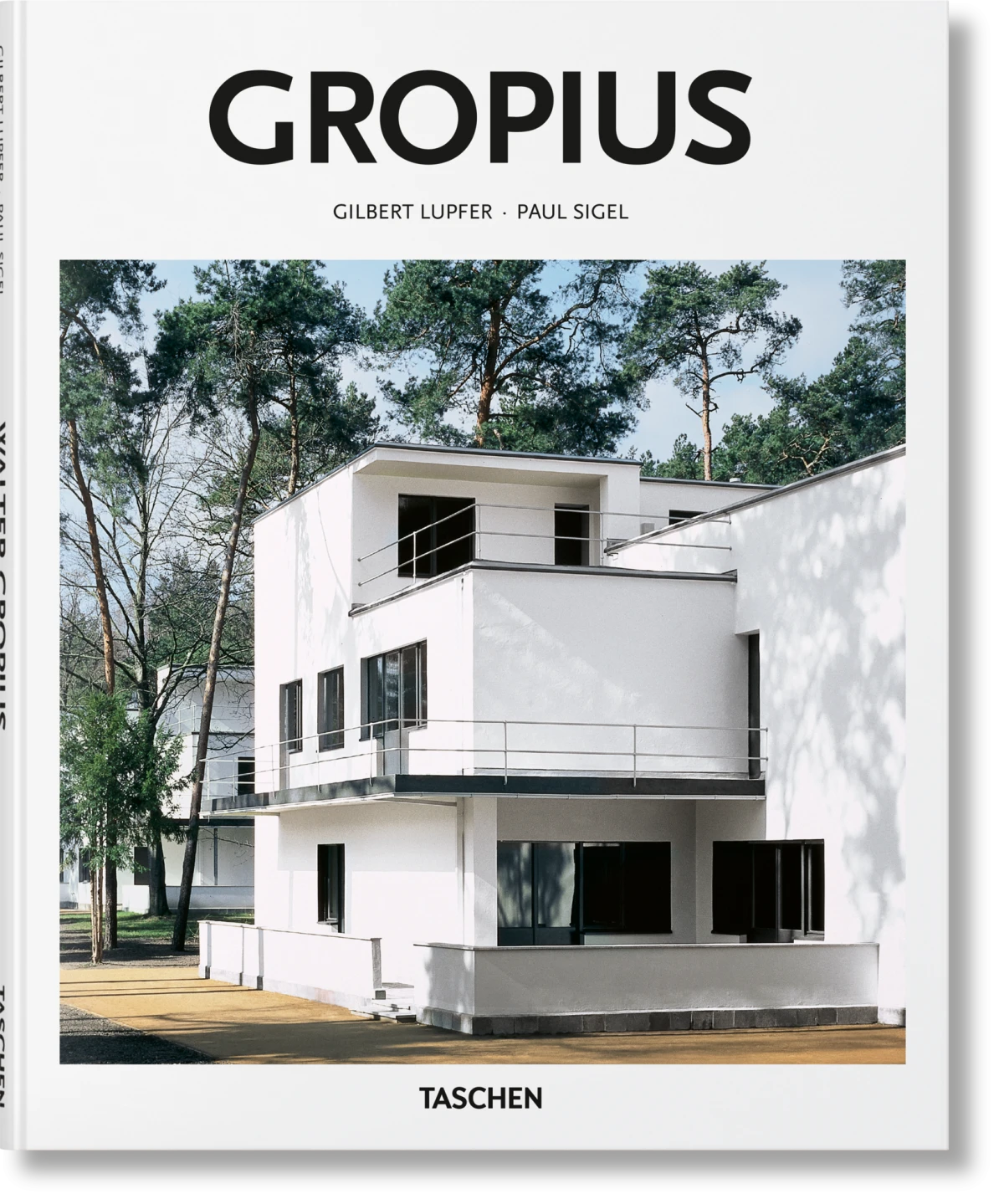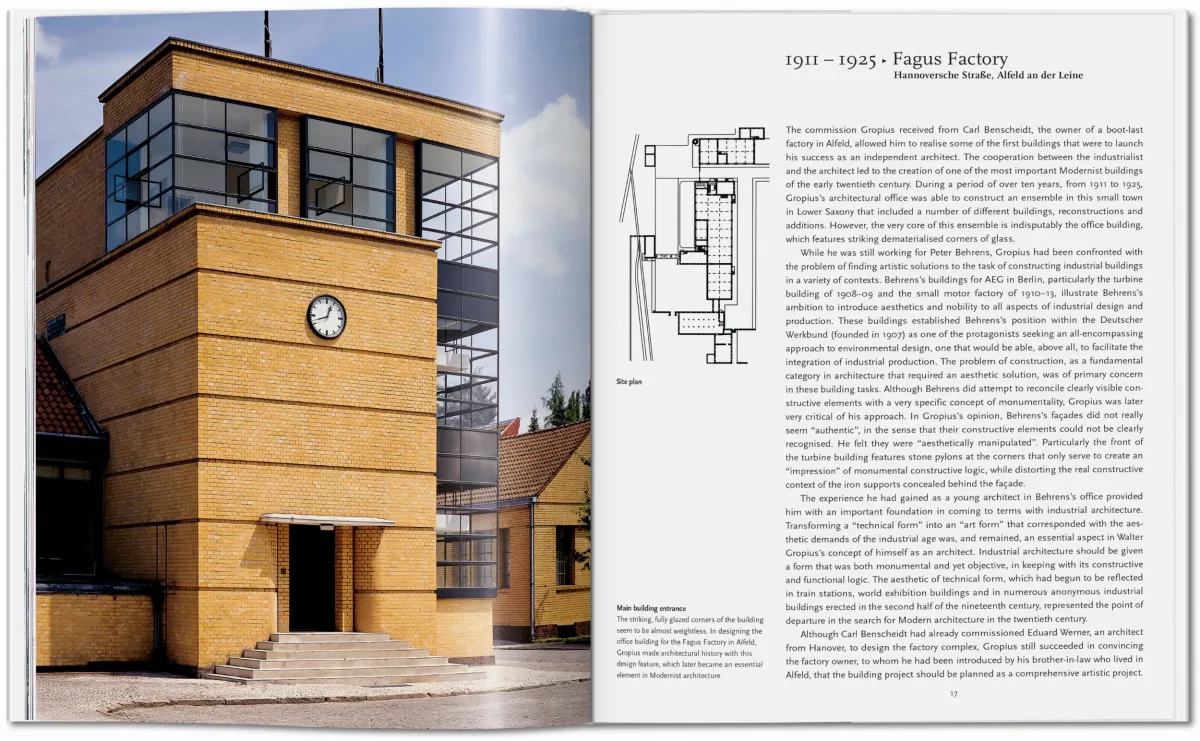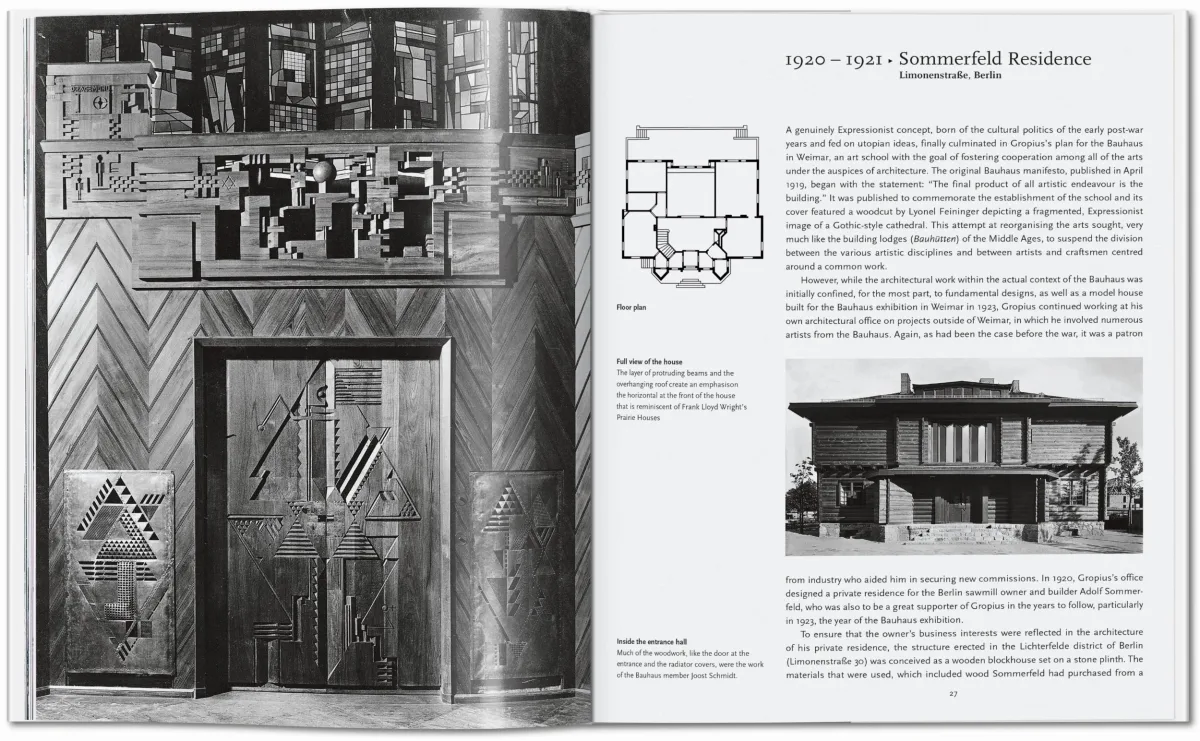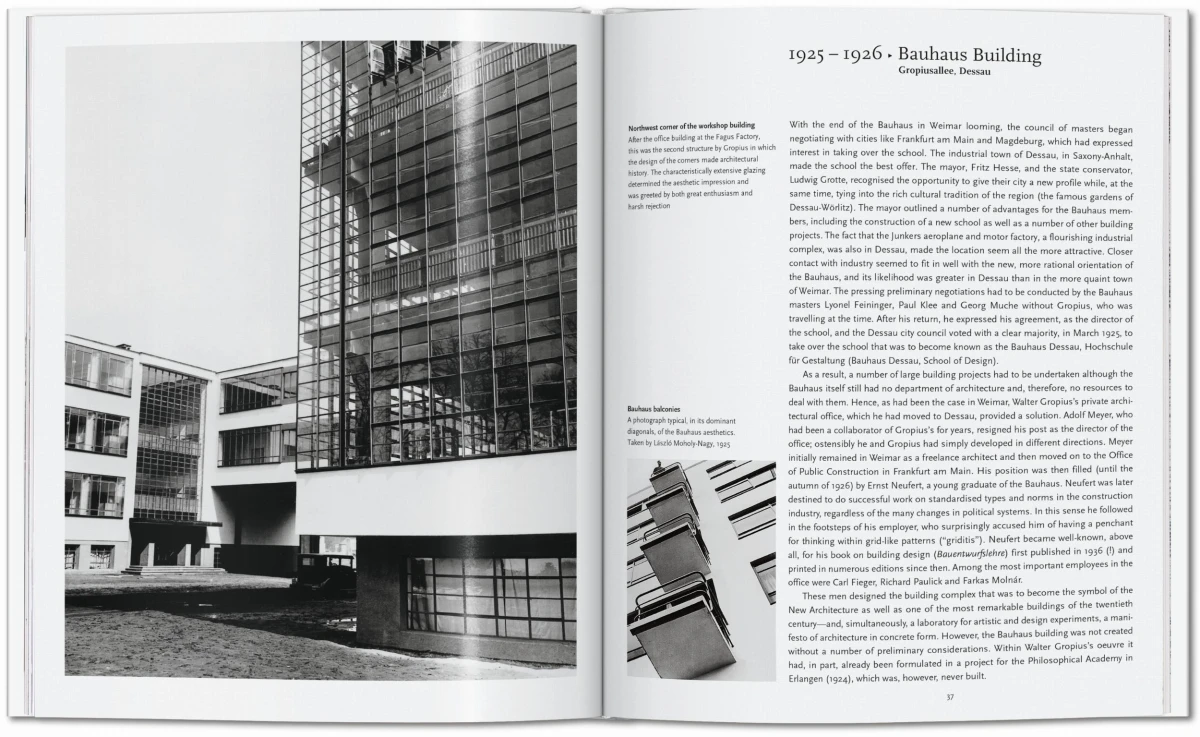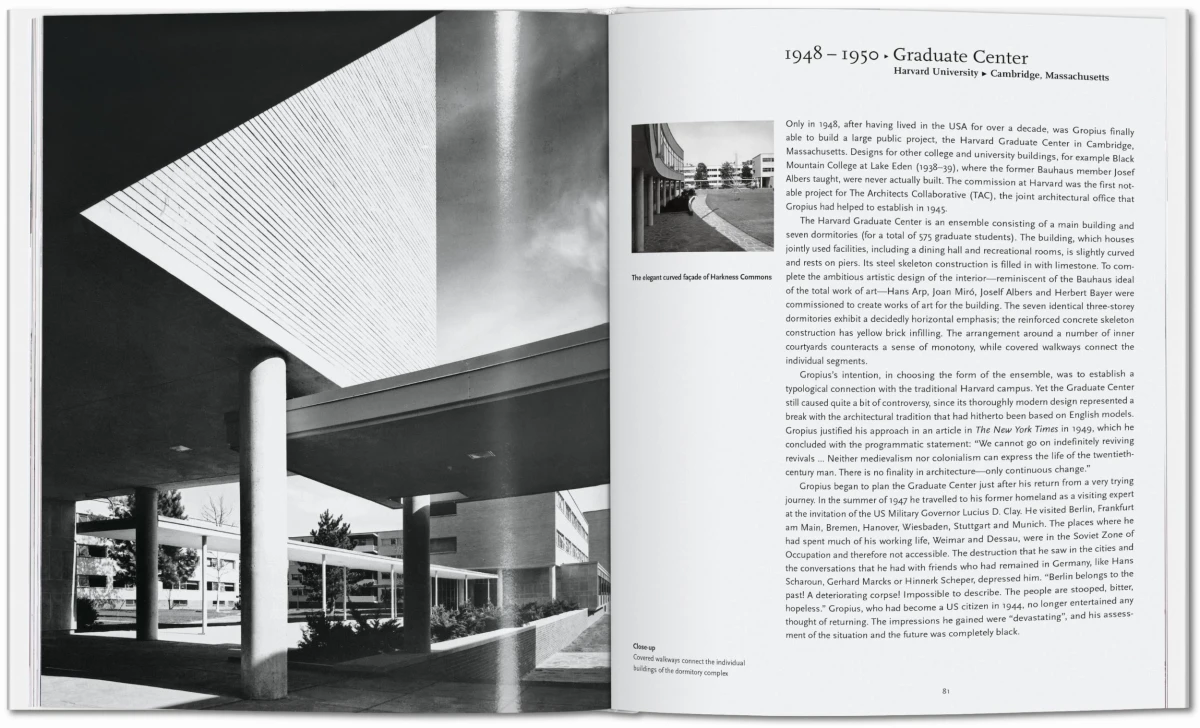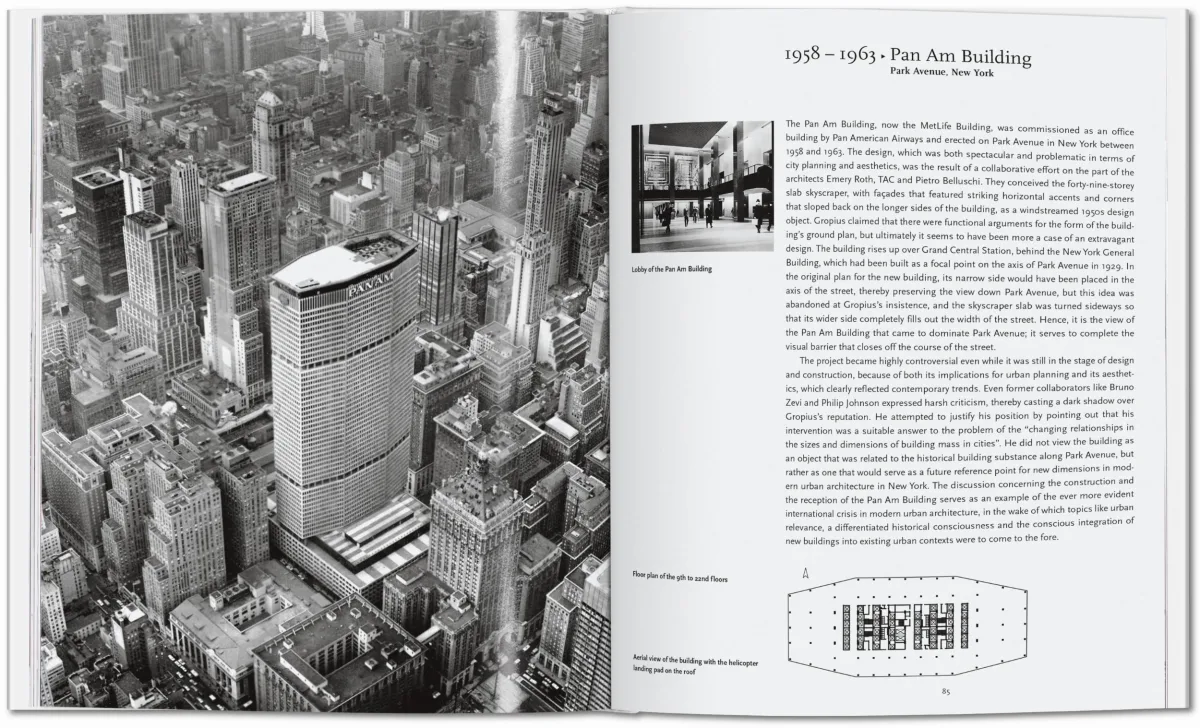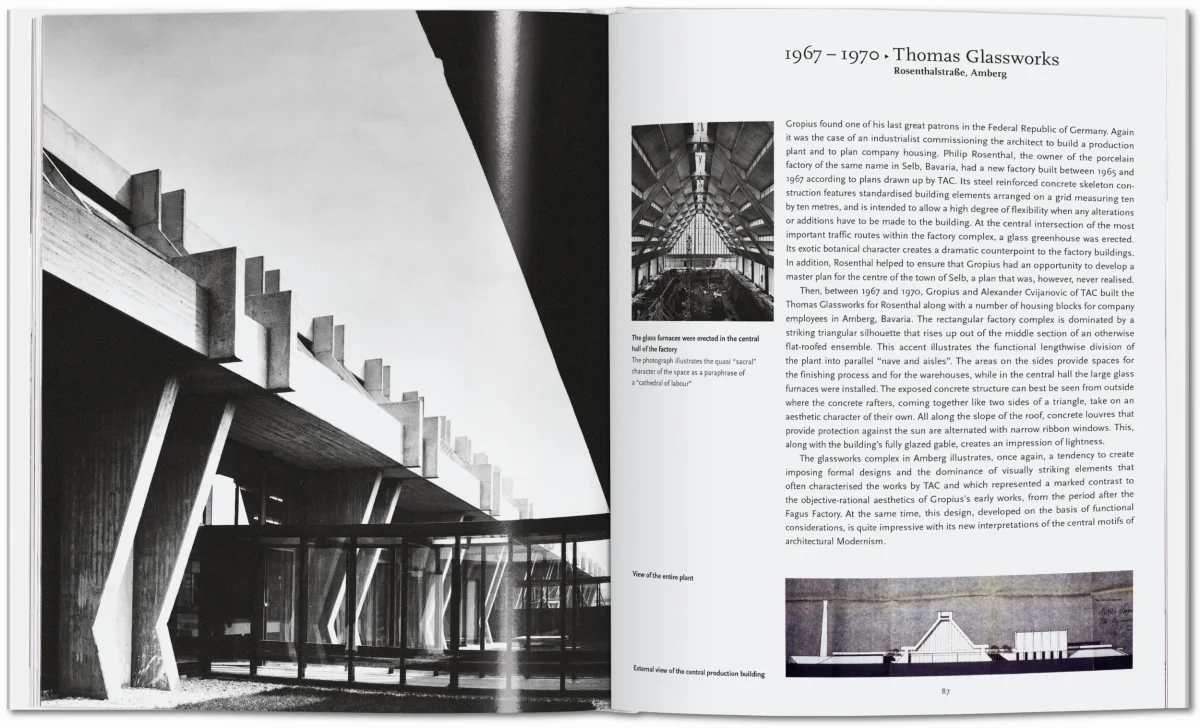1 / 7
Gropius
20
Modernist visionary Walter Gropius was founding director of the Bauhaus and pioneer of the International Style. From the Bauhaus School in Dessau, Germany, to the Chicago Tribune Tower, his fundamental tenets of functional beauty and a complete aesthetic environment remain benchmarks for architects, designers, and urbanists alike.
Hardcover, 8.3 x 10.2 in., 1.39 lb, 96 pages

Gropius
20Future Façades
Walter Gropius, visionary of the Bauhaus and beyond
Walter Gropius (1883–1969) set out to build for the future. As the founding director of the Bauhaus, the Berlin-born architect had an inestimable influence on our aesthetic environment, championing a bold new hybrid of light, geometry, and industrial design, as dazzling today as it was a century ago.
In this essential architect introduction, we survey Gropius’ evolution and influence with 20 of his most significant projects, from the Bauhaus Building in Dessau, Germany, to the Chicago Tribune Tower and Harvard University Graduate Center, completed after Gropius’s exodus to the United States in 1937. We explore his role both as an architectural practitioner, and as a writer and educator, not only as a Bauhaus pioneer, but also, along with Ludwig Mies van der Rohe, as a leading proponent of the International Style.
Along the way, we see how many of Gropius’s tenets remain benchmarks for architects, designers, and urbanists today. Whether in his emphasis on a functional beauty or his interest in housing and city planning, Gropius astounds in the agility of his thinking as much as in the luminous precision of his work.
In this essential architect introduction, we survey Gropius’ evolution and influence with 20 of his most significant projects, from the Bauhaus Building in Dessau, Germany, to the Chicago Tribune Tower and Harvard University Graduate Center, completed after Gropius’s exodus to the United States in 1937. We explore his role both as an architectural practitioner, and as a writer and educator, not only as a Bauhaus pioneer, but also, along with Ludwig Mies van der Rohe, as a leading proponent of the International Style.
Along the way, we see how many of Gropius’s tenets remain benchmarks for architects, designers, and urbanists today. Whether in his emphasis on a functional beauty or his interest in housing and city planning, Gropius astounds in the agility of his thinking as much as in the luminous precision of his work.
The authors
Gilbert Lupfer studied art history, history, Romance studies and cultural studies at the Eberhard Karls Universität in Tübingen and the Freie Universität in Berlin. Paul Sigel studied art history and German literature at the Eberhard Karls Universität in Tübingen. They both currently teach at the Technische Universität Dresden.
The editor
Peter Gössel runs an agency for museum and exhibition design. He has published TASCHEN monographs on Julius Shulman, R. M. Schindler, John Lautner, and Richard Neutra, as well as several titles in the Basic Architecture series.
Gropius
Hardcover, 21 x 26 cm, 0.63 kg, 96 pagesISBN 978-3-8365-4434-4
Edition: EnglishDownload product images here
Born back in 1985, the Basic Art Series has evolved into the best-selling art book collection ever published. Each book in TASCHEN’s Basic Architecture series features:
- an introduction to the life and work of the architect
- the major works in chronological order
- information about the clients, architectural preconditions as well as construction problems and resolutions
- a list of all the selected works and a map indicating the locations of the best and most famous buildings
- approximately 120 illustrations (photographs, sketches, drafts, and plans)
4.8
Schöner Einstiegsband
December 10, 2021
Schöner, aber eher dünner Band zum Einstieg. Ordentliche Qualität für den Preis.Excellent basic monograph of architecture
November 16, 2021
This publishing house offers excellent publications with carefully selected images and simple and essential texts to approach architecture.Ottimo sunto della carriera di Walter Gropius.
November 6, 2021
Libro interessante su uno dei padri fondatori della BauhausSo aktuell wie vor 100 Jahren
November 2, 2021
Das Buch ist ein absoluter Klassiker und zeigt Gropius´ wesentliche Werke. Ich habe es als Vorbereitung für eine Studienfahrt nach Weimar gekauft und habe in dem Buch gefunden, wonach ich gesucht habe. Auch interessant: Meine Schüler haben sich das Buch bei mir ausgeliehen und waren auch sehr interessiert.Gutes Übersichtswerk
October 27, 2021
Gutes Büchlein, um einen Eindruck von Gropius Bauten zu bekommen. Gerade um sich zügig ein Bild über verschiedene Architekten zu machen, eignet sich diese Reihe hervorragend.
